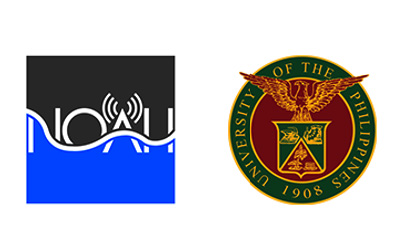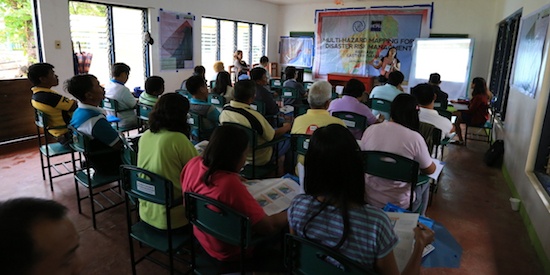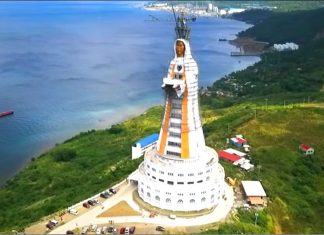
The University of the Philippines Diliman has setup the new home of Project NOAH, the successful hazard and risk monitoring program previously developed and run jointly with the government’s Department of Science and Technology (DOST).
Now known as the University of the Philippines Nationwide Operational Assessment of Hazards (UP-NOAH), the program comes back to UP as a multidisciplinary research center housed in the UP National Institute of Geological Sciences and directly under the Office of the President in UP.
“In a sense, Project NOAH is coming home,” said UP President Danilo L. Concepcion in a UP publication, noting that the project was conceived by the DOST with the help of UP professors, led by its executive director Dr. Alfredo Mahar Lagmay from the National Institute of Geological Sciences (NIGS), and that most of the project’s staff have come from UP. Project NOAH began as a research program under the DOST in 2012 following the Typhoon Sendong tragedy in 2011. Having delivered its research results and after two extensions, the project was scheduled to end when UP stepped in to continue it.
“The project’s benefits go far beyond its research value,” said Concepcion. “It has literally been a lifesaver for millions of Filipinos threatened by natural disasters like floods, landslides, and storm surges. It deserves a new lease on life, and UP is happy to welcome it into its fold.”
Project NOAH was designed to harness technologies and management services for disaster risk-reduction activities offered by the DOST through PAGASA, PHIVOLCS, and the DOST’s Advanced Science and Technology Institute (ASTI), in partnership with the UP National Institute of Geological Sciences (NIGS) and the UP College of Engineering.
The UP NOAH Center continues its mission after the current Philippine administration ended the project early this year with 4 years experience of multi-awarded and internationally recognized efforts.
Moving back to UP and still under the leadership of Dr. Mahar Lagmay, Project NOAH has been credited by the Asia Pacific Awards as a top city initiative in disaster risk management for installing improved warning systems all over the country, providing real-time weather and flood warning, and developing hazard maps for landslides, storm surges and floods.
“We were a program in need of a home,” Lagmay says in a UP release. “Disaster management should involve more than science and technology. We also need artists and educators to communicate messages more effectively. UP is an interdisciplinary community and will make the perfect home for us, given that our disaster problem will grow even bigger in the future. We remain deeply grateful to the DOST for having hosted us, and we look forward to complementing the work of its agencies toward our common goal of mitigating the effects of disasters on our people.”
The UP NOAH Center is setup with the goal of helping reduce the impacts of hazards, assisting the country in disaster risk reduction and management, climate change adaptation and mitigation efforts and related activities through research, development and extension services.
(With reports from Bianca Marie G. Katipunan)











